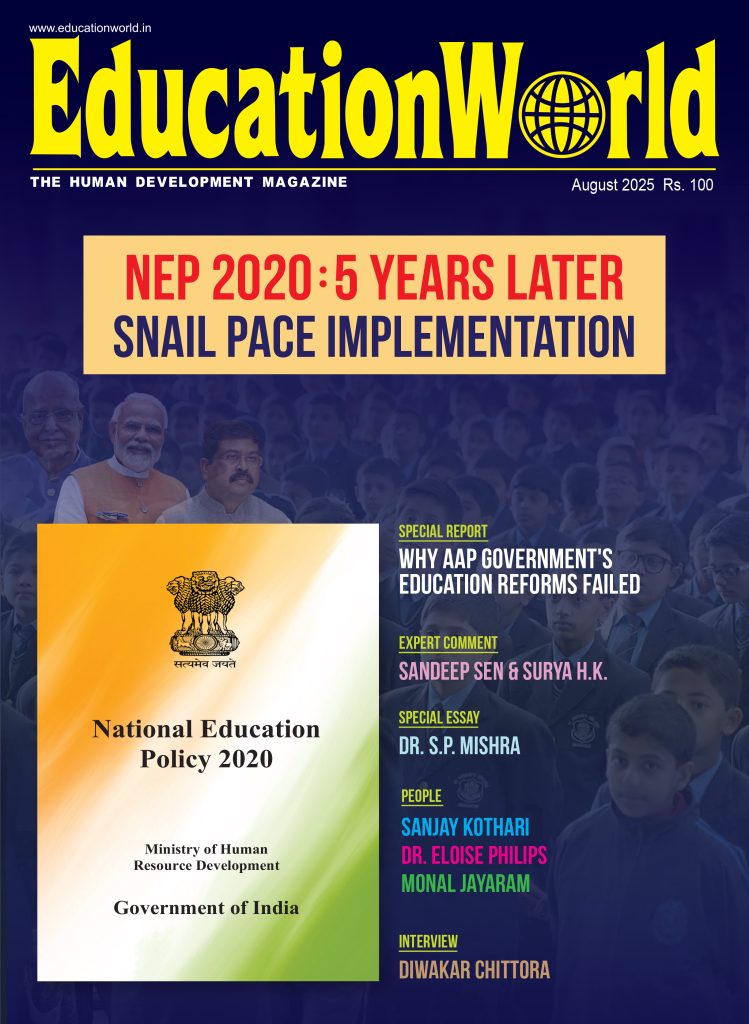Delhi: Bleak reflection
In a refreshing and intelligent departure from past practice, the 12th Annual Status of Education Report (ASER), published by the Mumbai-based NGO Pratham Education Foundation (estb. 1994) and released in Delhi on January 16, focuses on adolescents and youth in the 14-18 years age group who have completed elementary (class I-VIII) and secondary or even higher secondary education in rural India.
Hitherto, the annual ASER was a massive exercise which involved deployment of over 25,000 youth (mainly college students) who fanned out across India’s 589 rural districts and administered age-appropriate vernacular language reading and maths tests to measure actual learning outcomes. This is a valuable voluntary exercise inasmuch as it busted tall claims of the Central and state governments of great advances — mainly based on rising enrolments — in primary education.
The annual ASER survey which focused — and remains focused — on rural India, always made depressing reading. For instance, ASER 2016 (the report wasn’t published in 2015) indicated that the percentage of class VII children who could read class II textbooks was only 66.1 percent and the percentage who could not do simple subtraction and division sums was higher than the previous years. In short, learning outcomes in rural India are slipping rather than improving.
ASER 2017 focuses on children in the 14-18 years age group to assess the benefits derived by students who have completed primary and secondary education in rural India. It surveys and evaluates how they are faring not only in terms of reading and maths learning outcomes, but also in their engagement with the Skill India and Digital India initiatives of the Central and state governments. In short, ASER 2017 provides a snapshot of the lives of 14-18-year- old youngsters in rural India.
Drawn on a smaller sample of 30,000 adolescents and youth from 25,000 households in 28 rural districts of 24 states with the support of 35 partner organisations, ASER 2017 reports their status in four areas: activity, ability, awareness and aspirations. Under activity, the attempt was to learn if they study, pursue vocational education or work; ability tested them on their utilisation of literacy and numeracy skills; awareness gauged familiarity with digital and financial instruments, processes and exposure to media, while under aspirations, career goals were assessed.
The survey indicates that the learning deficits of elementary school are carried forward as teens transform into young adults, and highlights that a quarter of young citizens in this age group still cannot read basic texts in their vernacular languages and more than half struggle with simple — three digits by one digit — division sums. The report reveals that 14 percent of adolescents were not enrolled in any learning programme and only 5 percent in a vocational course.
In his foreword, Pratham chairman Madhav Chavan wryly notes that “the number of youth signing up for agriculture or veterinary courses across India is less than half a percent of all undergraduate enrollment. Foundational agricultural courses that replace the usual bachelors courses but also add training in skills that could prepare youth for alternative vocations need to be designed and delivered”, says Chavan.
The value of ASER 2017 is that it follows children who come out of rural primaries and secondaries and assesses their readiness for work and higher education. On both counts the verdict of the survey is depressing. Only 5.3 percent are enrolled in VET (vocational education and training), 60.2 percent are working — most of them in the farm sector — given their education and age profiles. The remainder migrate to the cities to do low-end jobs there.
Among knowledgeable educationists, there’s widespread appreciation that ASER 2017 has focused on school-leavers rather than in-school children as in its 11 previous surveys. It is great to see that the conversation in India is going beyond basics, i.e, literacy and numeracy. ASER has been leading the way in taking the conversation from access to education to quality of education, and they have now taken it one step further. I am particularly intrigued with the aspiration aspect of the survey and would love to see an exploration of societal structure and student agency in statements of aspirations by youth. We have found in our studies, that often aspirations are constrained by what you know you can or cannot do, says Akanksha Bapna, an alumna of Cambridge and Harvard universities and founder-CEO of Evaldesign, a Delhi-based firm that is focused on bridging the gap between policy, research and practice in K-12 education.
An invaluable publication, the annual ASER holds up a mirror to government — the majority of rural primaries in rural India are (state) government schools — and also to India’s education officials and educators. Invariably, the mirror has projected a bleak reflection. ASER Rural 2017 has broken new ground by turning the spotlight on adolescents and youth who emerge from rural Indias dystopian school system to spend their lives in shallows and misery.
Autar Nehru (Delhi)

















Add comment